Note: Click the map images to view them full-size! (opens in a new tab)
[What’s K★R?]
K★R refers to the game’s in-universe school-wide radio broadcast “Kyusei Radio,” hosted by the broadcasting club. Inspired by that program, this corner discusses new Kindred Spirits trivia every Wednesday. If you’re interested, please search for @toitentu on Twitter.
School Guide
Partial Unveiling
Kokonotsuboshi Girls' Private Academy of Commerce
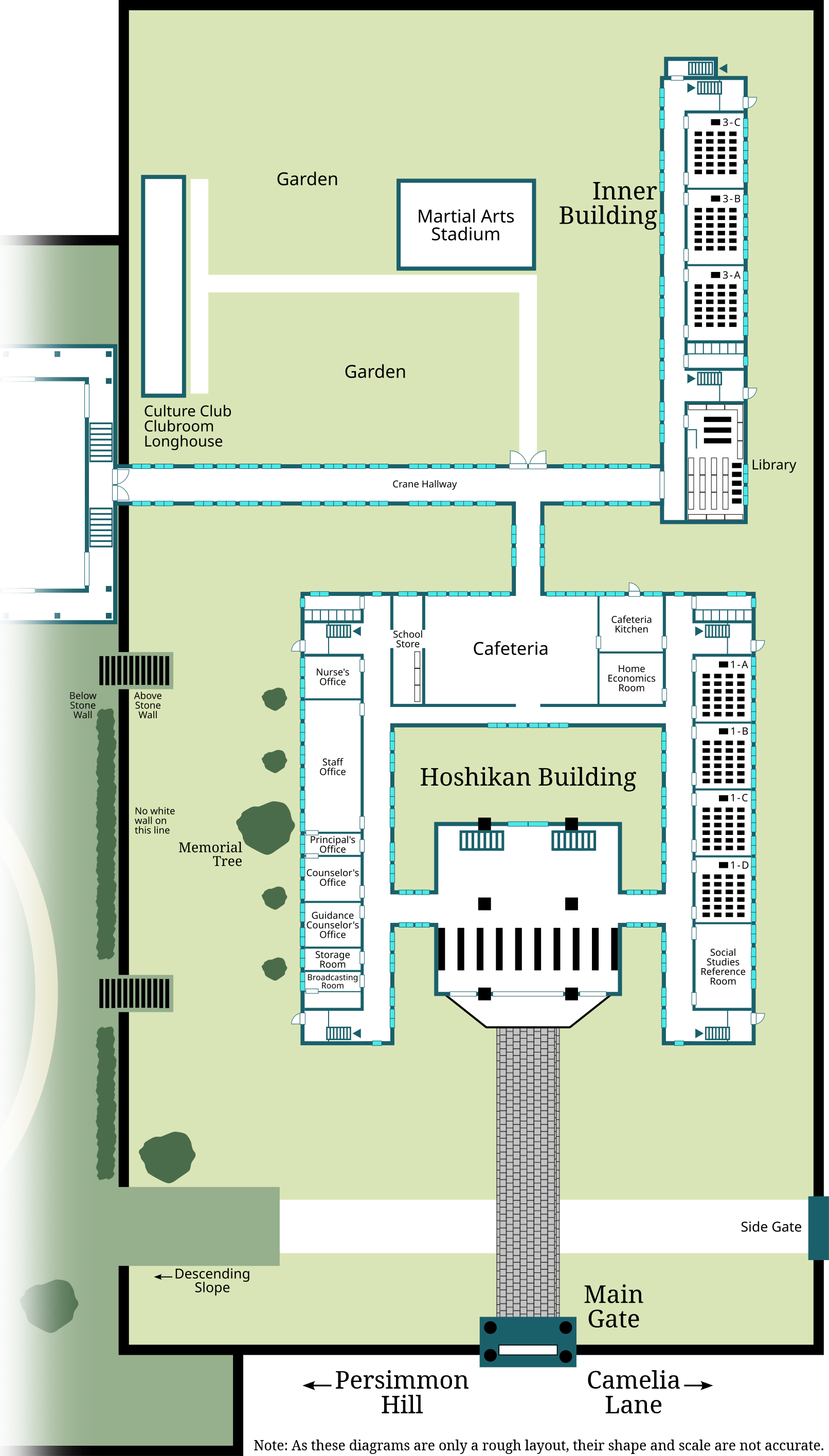
[The Hoshikan and the Hoshikan Building]
This is where underclassmen like Yuna and Hina have their classes. The “Hoshikan”—a Japanese Western-style building—was built on the site of the old castle tower, while the school building was built in a way that surrounds the Hoshikan, earning it the name the “Hoshikan building.”
On Building Terminology
To be clear, the “Hoshikan” is not the same as the “Hoshikan building”; the “Hoshikan” refers to the structure in the center, while the “Hoshikan building” refers to the building surrounding and connected to it. It’s a bit confusing, but this is the terminology the game uses, so I’m using it here. The original Japanese has a clearer distinction between the two, as the “Hoshikan” (星館, meaning “star building”) is already referred to as a building by its name, while the “Hoshikan building” (星館校舎) uses a term for “building” (校舎) that’s only used for school buildings (making the translation closer to “Hoshikan School Building”).
The Hoshikan is a two story structure with a clock tower, and its construction mixes the styles of both Japanese and Western-style architecture. The first floor serves as the entrance to the building, while the second floor holds a large tatami room, which, in addition to acting as a space for club activities and classes, serves as an area for students to rest and relax. Kotatsus are laid out in the tatami room in the wintertime, making it a popular spot among the students during the season.
The Hoshikan building is three stories tall. It holds the broadcasting club room, math club room, and other such rooms. The kindred spirits occupied the roof of the left wing of the building. Access to the roof of the right wing is limited, with access only given to clubs that need access for their activities, such as the astronomy club.
[Inner Building]
This is where students like Aihara or Amishima spend their time at school. The building’s name is derived from its location further inside the school grounds in comparison to the Hoshikan. The inner building is connected to the Hoshikan cafeteria via a hallway known as the Crane Hallway. The building has a quiet, relaxed atmosphere, providing a suitable ambiance for the territory of the oldest students at the school.
As the vending machine corner located just outside the inner building’s emergency exit is only used by the third-years, it’s been given the nickname the “super-inner.”
[Kumomiyagura]
The Kumomiyagura is a portion of the old castle that has been directly reused by the school. It stands out as a symbol of Shirojo due to its visibility when looking up at the school from the rest of the city.
The first floor holds the club rooms of the athletic clubs, while the second floor holds the tatami rooms used as lodging during school camps. Students not participating in club activities may also lodge at the Kumomiyagura during school camps if they submit an application as part of a group. Lodging at the Kumomiyagura is prohibited during the winter due to the cold temperatures in the school’s geographical region.
A bookshelf known as the “Kumomi Library” is hidden away in one of the building’s hallways, and is used by students as a lending library to exchange manga books. It’s said to be a secretive source of fun for the students at school camp.
The school’s auditorium was built as an annex of the Kumomiyagura, but as the Kumomiyagura’s foundation sits much higher than that of the auditorium, this has led to a strange arrangement where an entrance to the Kumomiyagura is located on the second floor of the auditorium building.
[Main Gate]
This gate, with its attached drum watchtower, serves as the school’s entrance. Drumming in the morning and the evening is normally performed by members of the disciplinary committee, but drum duty is also assigned as punishment for latecomers. Unenthusiastic drumming is generally a sign that a latecomer is serving out their punishment. School rules also allow students to perform drum duty on their birthday if they so desire.
Everyone’s Classes
Class 2-A: Integrative Studies Class
Class 2-A is located on the second floor of the left wing of the Hoshikan building, by the stairwell. Yuna and Ano are in this class. The class has a laid-back atmosphere, possibly due to the laid-back attitude of many of its students, and its homeroom teacher also has a gentle demeanor. Despite this, the class makes strangely few mistakes.
Class 2-B: Integrative Studies Class
Class 2-B is located on the second floor of the left wing of the Hoshikan building. Ichiki, Futano, and Miyama are in this class. In addition to those three, this lively class holds a number of other quirky individuals, such as the drama club’s second vice-president (and vice-chairman). The class has a rivalry with class 2-D that has been passed down throughout the years.
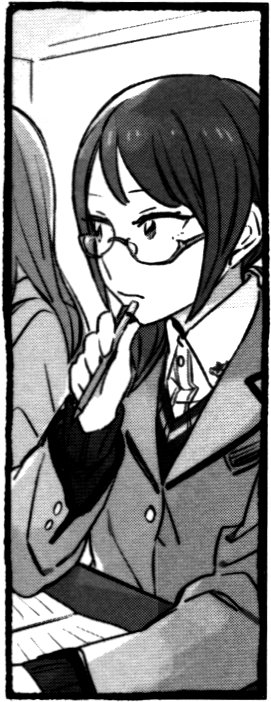
Class 2-C: Science Class, 1
Class 2-C is located on the second floor of the left wing of the Hoshikan building. Tsurugimine and Ariu are in this class. Unlike most of the other classes at Shirojo, this class is completely normal. In fact, it’s too normal to the point where rumors have sprung up suspecting that this class is actually hiding something. The math teacher, who’s friends with Sonou, is in charge of this class.
Class 2-C: Science Class, 2
Among her classmates, Kiri is, true to her personality, known as the “girl who loves cute things and is also obsessed with Tsurugimine-sensei.” Ariu refrains from asserting control over how the class is managed, but the class representative often relies on her for advice. Ariu’s somewhat well-known in the class for loving ice cream.
The Japanese Etiquette Room
TL Note: The “Japanese Etiquette Room” (作法室) is a replica of a traditional Japanese room intended to teach students what manners to follow in traditional environments. It usually includes a tatami floor, sliding screen doors, and a tokonoma (alcove with art and flowers), and may also have additional features. It may also be used for practicing Japanese tea ceremony, particularly by school clubs.
Class 2-D (Humanities), 1
This class is located on the second floor of the left wing of the Hoshikan building. Koba Youka is in this class. As the class focuses on literature and the humanities, most of its students are expectedly on the modest side, making Youka seem out of place in comparison. Despite this, Youka has become something like a class mascot, being endearingly called “Youka-chan” by the other students.
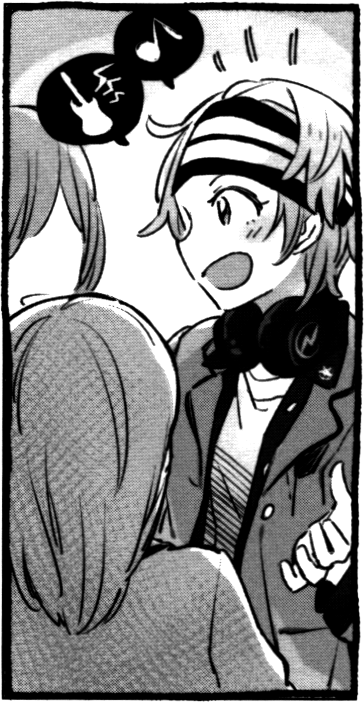
Class 2-D (Humanities), 2
Class 2-D is also known as the “Kokonotsuboshi Party.” Throughout the years, 2-D has been responsible for producing many student council presidents and staff, and its notes on running for candidacy are well-guarded by its members. In recent years, class 2-B has begun to encroach on the class’s student council-related accomplishments, causing 2-D to see 2-B as rivals.
Class 2-D (Humanities), 3
The student council elections are also responsible for Youka’s current popularity with her class. It’s said that she once defused a confrontational class meeting with the power of rock... The details of that story may be discussed another time.
Class 2-D (Humanities), 4
Sonou Tsukuyo is the class’s vice-homeroom teacher. The sight of her walking with the class’s elderly homeroom teacher is popular with a portion of the student populace, who describe it as “like a grandmother and her cute grandchild walking together, fwhoooooa!” A portion of the classroom is used to store a lineup of Sonou-sensei’s book recommendations.
Classes 2-E, 2-F, and 2-G
Although they don’t appear in the game, classes E, F, and G are used for curriculums focusing on commerce (the number of active classes varies depending on the number of students enrolled). Kokonotsuboshi Girls’ commerce curriculum stands out in that, unlike those at other schools, it provides greater support for students wishing to pursue higher education.
Commerce Curriculums
For context, Japan has a type of high school known as “commercial high schools” (of which Kokonotsuboshi Girls’ Academy of Commerce is one); the commerce curriculum likely provides courses that are more in the vein of those types of schools. Commercial high schools appear to be more like vocational schools, where students focus more on obtaining practical knowledge and qualifications/certifications in business fields rather than learning general knowledge that’s further refined with a college education; due to this, students enrolled in them are often expected to join the workforce directly after employment rather than move on to university. (At least according to contemporary media at the time of the game’s release; modern sources seem to suggest the opposite, and that enrollment in a commercial high school makes it easier to advance to higher education.)
Class 3-B (General Commerce), 1
Class 3-B is located on the first floor of the inner building. Aihara Miki, Amishima Matsuri, and Inamoto Miyu are in this class. The class initially pushed for Aihara to be the class representative, but due to Inamoto and Amishima’s gentle opposition, the drama club’s chairman was instead chosen for the role.
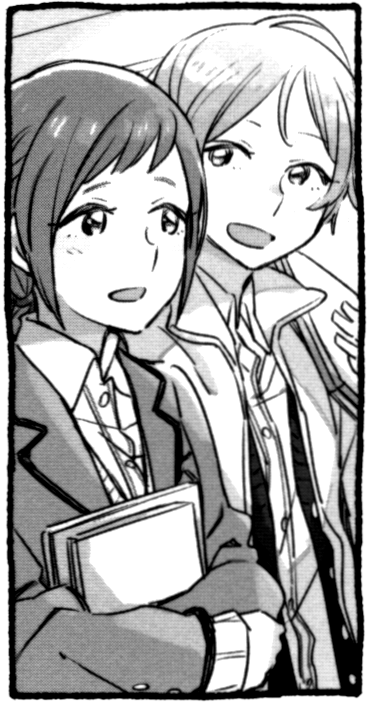
Class 3-B (General Commerce), 2
The class has a bright atmosphere. As Matsuri’s popularity has led to many students wanting to snap pictures of her, she’s been assigned to the seat by the window at the back of the class. That position was suggested by the photography club, as they thought it would give a nice ambiance to photos of her taken from outside the building.
Class 3-B (General Commerce), 3
Inamoto’s seat is located right next to Matsuri’s. Miyu has the nickname of “Coach” among her classmates. They gave it to her due to how careful she is and how scary she gets when she’s mad, but Miyu’s not very happy with the nickname herself.
Class 3-B (General Commerce), 4
Aihara’s status as the “Saint of Shirojo” still holds true within her class. Due to her comprehensive knowledge of where supplies are located, teachers often come to her class to ask her for help.
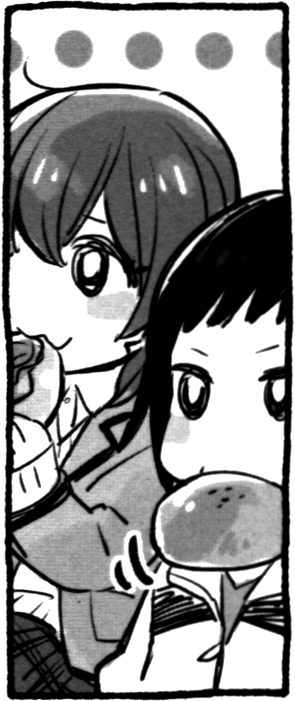
Classes 1-A - 1-F
The first-year classes are all under an integrative studies curriculum. Komano and Maki are both in class 1-C. This year’s class 1-C has many students who are in athletic clubs or are otherwise strong, so the class has done well in both the school ball sport contest and the school marathon. 1-C is known among the student population for its physical prowess.
Both Komano and Maki have good relations with their classmates, and the two are respected by their classmates for their kindness and helpfulness. As first-years on the beautification committee frequently visit 1-C to ask for Maki’s help, students have recently started to refer to the class as the beautification committee’s branch office.
The Hoshikan Building’s First Roof
This is the roof that the kindred spirits previously occupied. Students are given free access to it. The first roof is located at the top of the left wing of the school, providing a view looking down at the town, and benches are arranged along its length. Students are free to access this roof as long as the door to it is unlocked, but a surprisingly small amount of students actually use it.
The Hoshikan Building’s Second Roof
This roof is located on the opposite side of the Hoshikan building relative to the roof where the kindred spirits dwelled. The door to it is locked, and normal students are forbidden from entering the area. A small astronomical observatory is set up on the roof, which the astronomy club regularly camps over at school to use. This area hasn’t yet appeared in Kindred Spirits media.



